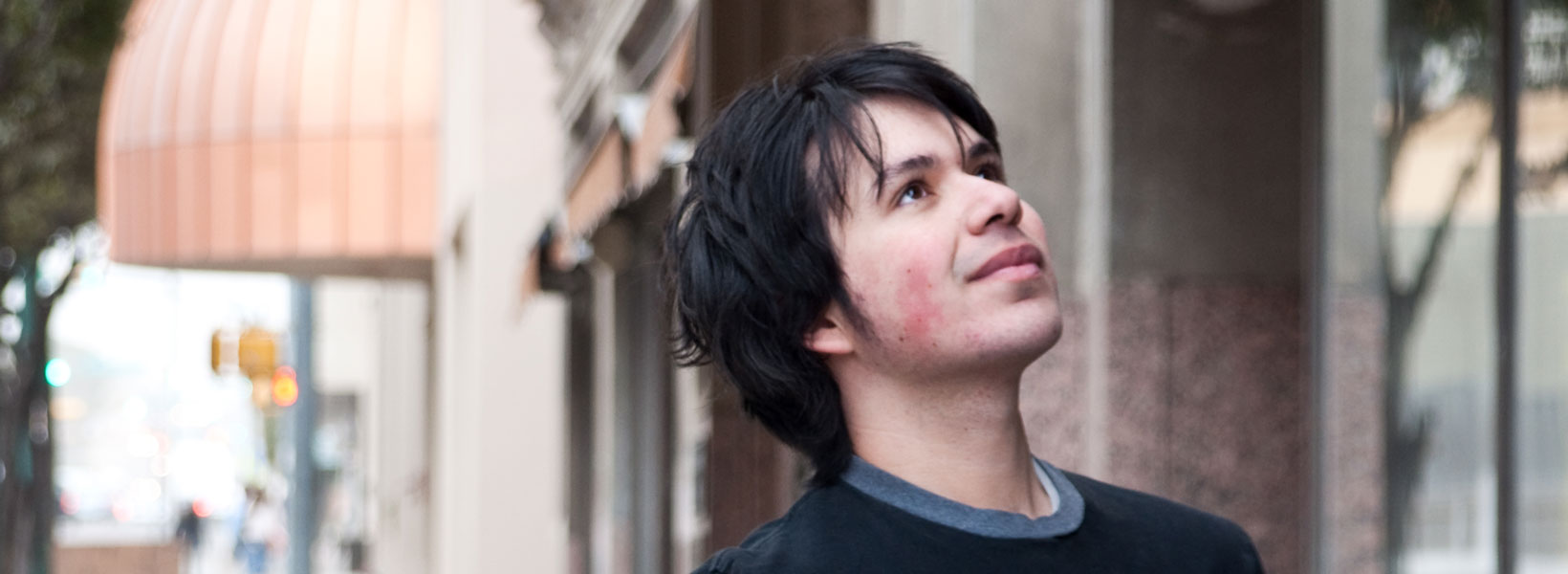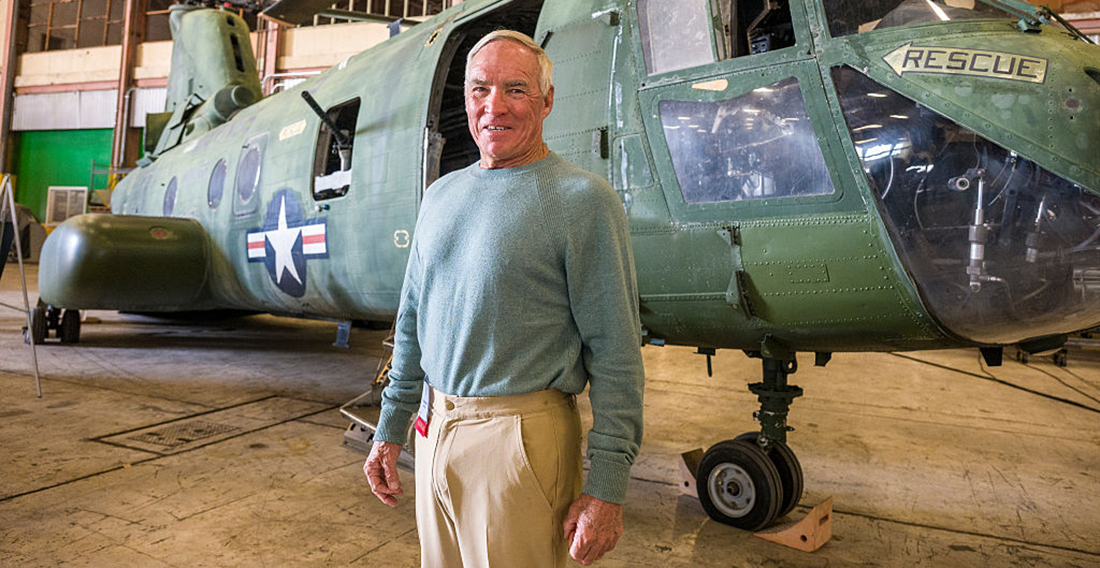Alejandro Caballero '13
Perseverance: Alejandro Caballero Demonstrates Another Kind Of Simpson Success

This will be a different kind of Simpson Success Story.
The normal approach is to shine a light on a graduate who has achieved great success – someone who has been named president of a company, or received a prestigious award, or contributed to society in an important way.
There are many of those in the Simpson community.
But what happens when life throws you a curve ball, as it so often will? How can you rely on your Simpson education then?
Meet Alejandro Caballero ’13.
Caballero only needed one job interview after college to land a job, with the Gannett Company’s design studio in Des Moines, where he helped design pages for Gannett-owned newspapers in the Midwest.
Although Caballero graduated with a degree in marketing and a minor in computer information systems, he so impressed the Gannett folks with his design and photography work for a Simpson magazine that he was hired despite his lack of experience.
“Alejandro shows how a student of great talent and drive can thrive in the environment we provide for them at Simpson,” says Brian Steffen, professor of Communication and Media Studies.
But there was a problem. Caballero grew up in Juarez, Mexico, and attended high school at the Lydia Patterson Institute in El Paso, Texas. Simpson awards a scholarship to one student from the school each year, and Caballero was the recipient.
“You have no idea how big of a help that scholarship was,” he says.
But Caballero’s Mexican citizenship required him to obtain a work permit, which expired in May. The Gannett Company was forced to lay him off, and he has until the end of July to return to Mexico.
“It’s awkward,” he says. “But it’s something, I guess, that has to happen.”
This is a success story?
That depends on your definition. Simpson College’s Engaged Citizenship Curriculum provides students with the skills necessary to thrive in today’s world, including the ability to think critically, to communicate effectively and to solve problems creatively.
The 23-year-old Caballero vows to overcome this hurdle in his life by relying on the skills he learned at Simpson.
“I am motivated,” he says. “This is the first time I feel sort of uncomfortable with something – the fact that I have to move back home, and the fact that I have to work on my own in order to come back to the United States to work here.
“It motivates me. Because whenever you feel too comfortable you stop pushing yourself. I think there’s a saying that goes, ‘Comfort kills the creative spirit.’ So definitely I’m going to use this to work even harder, to create an even stronger portfolio than what I have.”
This is the kind of determination and drive that the Simpson community witnessed from the moment Caballero began classes in the fall of 2009.
“In my time at Simpson, I used it very wisely,” he says. “Some weekends, I would have to sacrifice going with my friends so that I could be in the photography studio or in the computer labs, just practicing my craft, or learning something new about photography or playing around with InDesign. All of that came together with the magazine.”
Before Caballero’s senior year, Steffen approached him with the idea of creating a Simpson magazine. Called ID, the magazine’s inaugural issue received rave reviews. Caballero was the editor; he took all of the photographs and supervised the design.
It was that magazine that inspired the Gannett Company to hire him after one interview.
“The first issue was difficult, because it had not been done before,” he says. “It taught me a lot about collaboration when creating a print publication. Despite our troubles, the first issue was well-received. It did make sort of an impact.”
He continued to learn during his year with Gannett.
“I really liked the graphic design aspect of newspapers, and I really learned a lot,” he says. “If something comes up where I need to do something similar, I will gladly do it, but photography has always been my passion.”
Caballero said he intends to move back in with his parents in Juarez – “for as short a time as possible” – while he builds his free-lance business, Avid Visuals, and looks for work.
“I shouldn’t have a problem getting a job,” he says. “First of all, I’m bilingual. Second, my education was really good, I can assure you of that. All of the experience, the extracurricular stuff I did at Simpson, such as the magazine and doing photography at the Simpsonian, all of that has given me a portfolio that puts me at a higher place than most students my age.”
To remain in the United States, Caballero would need to find a sponsor willing to pay up to $4,000, complete the necessary paperwork and agree to provide him a full-time job for at least three years.
The Gannett Company, he says, is not willing to sponsor international workers with so little experience, “and I don’t blame them.”
“Right now, I don’t have the experience that is worth $3,000 or $4,000,” he says. “As long as I build a strong portfolio, then I feel I can be a bit more confident about going to a big company like Meredith and show them what I’ve been doing. It may take a few years.
“The main reason I want to stay here in the U.S. is because the possibilities in the design and photography industries are much better here than in Mexico.”
Says Steffen: “Alejandro is going to be successful no matter where he is.”
For his part, Caballero remains philosophical about the future.
“I always thought that I was going to be able to stay here in the United States through my own merits, work really hard and get someone to sponsor a visa,” he says. “But in reality life doesn’t work the way you plan it.
“I’m trying to stay positive about everything,” he says. “This is just a challenge that I’m sure I will overcome. I just need to find a way to do it.”
Success at Simpson means more than earning a degree. It means joining a community of alumni, faculty, administrators and staff who form a lifetime network of friends and contacts.
Caballero displays a small book that he self-published, containing a portfolio of his best photographs.
“Most of these people, I met at Simpson,” he says. “Simpson was a great place for me to make friends. That’s where my career started. That’s where I have met people who have encouraged me and supported me.”
That support and encouragement, Caballero knows, will continue regardless of what his address might be a month or a year from now or 10 years from now.
That’s success, Simpson-style.
Article Information
Published
June 26, 2018
Author
Office of Marketing and Strategic Communication




